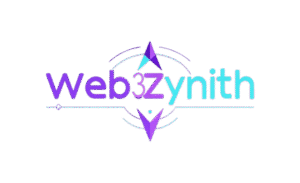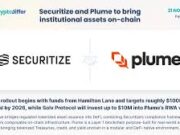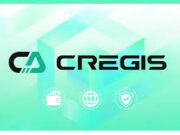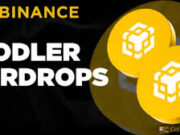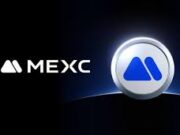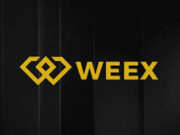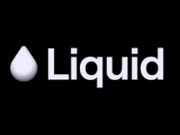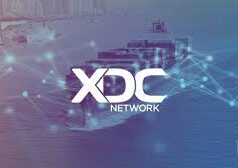The crypto world is buzzing, and for good reason. On September 15, 2025, PAW Chain will step onto one of the most important stages in blockchain regulation: the SEC Crypto Task Force roundtable in Chicago. This is no ordinary meetup—it is a regulatory milestone that puts a rising Layer 3 blockchain project face-to-face with some of the most influential decision-makers in U.S. financial oversight.
In this article, we’ll unpack why PAW Chain’s invitation matters, how its cross-chain interoperability is redefining decentralized finance (DeFi), and what this development means for the future of blockchain regulation.
What Is PAW Chain? Transforming DeFi With Layer 3
Although most crypto users are familiar with Layer 1s like Ethereum or Solana, and even Layer 2s such as Optimism or Arbitrum, PAW Chain is pioneering a Layer 3 architecture. Launched in 2024, it was designed to eliminate some of DeFi’s biggest pain points:
- Fragmented liquidity across chains
- Slow and risky bridges vulnerable to hacks
- User-unfriendly wallets and addresses
Unlike traditional chains, PAW Chain integrates EVM and non-EVM compatible blockchains into a single liquidity pool, powered by its Bridge³ technology. In practice, that means a user can deploy a smart contract once, and it works across Ethereum, BNB Chain, Polygon, Avalanche, Solana, Arbitrum, Optimism, Base, Celo, and Cronos—without needing separate versions.
This is a huge step for interoperability. As Bybit Learn notes, PAW Chain essentially removes the need for complicated bridges by condensing cross-chain transfers into a single click.
Even more, its ecosystem offers:
- PAW Wallet with personalized .paw usernames (no more long wallet addresses)
- PAW Swap, a multi-chain DEX with low fees
- PAW Scanner for real-time blockchain analysis
- CertiK-audited smart contracts with a score of 91.88/100 (CertiK Audit)
- Insurance coverage via Coincover and custody solutions with Fireblocks
The result? A secure, user-friendly blockchain environment built for both crypto newcomers and professional traders.
Why the SEC Crypto Task Force Matters
Created in 2025 under the leadership of Commissioner Hester M. Peirce—widely known as “Crypto Mom”—the SEC Crypto Task Force was designed to modernize crypto regulation and move beyond enforcement-only strategies.
According to SEC.gov, the Task Force focuses on:
- Determining how securities laws apply to tokens
- Exploring custody frameworks for digital assets
- Discussing tokenization of real-world assets
- Creating rational compliance standards for DeFi
This year, the Task Force launched its “On the Road” initiative (SEC Press Release), bringing roundtables to different U.S. cities. The Chicago event will spotlight blockchain development and interoperability, making PAW Chain’s inclusion both timely and highly relevant.
The Chicago Roundtable: What to Expect
On September 15, 2025, regulators, blockchain developers, and industry leaders will gather in Chicago—a city already recognized as a fintech hub. The roundtable agenda will likely cover:
- Scalability solutions for DeFi adoption
- Cross-chain interoperability standards
- Compliance and custody frameworks
- Security protocols and smart contract audits
Speakers such as Commissioner Hester Peirce and former SEC Chair Paul S. Atkins are expected to lead discussions. In previous Task Force sessions, topics included 24/7 trading efficiency, tokenization of securities, and privacy in blockchain surveillance (SEC Keynote).
For PAW Chain, this is an opportunity to showcase its unified liquidity model, which could help regulators understand how Layer 3 reduces fragmentation and costs in digital asset trading.
Why PAW Chain Was Invited
So, why PAW Chain among hundreds of blockchain projects? Several reasons stand out:
- Layer 3 Innovation – By building on top of Layer 2 networks, PAW demonstrates a next-generation approach to scaling.
- Security and Transparency – With CertiK audits and DAO governance, PAW aligns with the SEC’s push for risk management.
- Interoperability – Unlike most chains limited to EVM ecosystems, PAW bridges both EVM and non-EVM blockchains.
- Real-World Utility – From NFT marketplaces to merchant POS systems, PAW Chain is actively expanding into Web3 commerce.
As PAW Chain’s official website explains, its mission is to build a commerce-ready Web3 ecosystem that goes beyond speculation. The SEC’s invitation is therefore both a validation of its progress and a chance to influence policy.
The Bigger Picture: Impacts on Blockchain Regulation
PAW Chain’s inclusion has ripple effects across the industry.
- For blockchain developers – It signals that innovative Layer 3 solutions are gaining attention from regulators.
- For investors – It boosts PAW’s credibility, potentially making it more attractive on exchanges like Gate.io and beyond.
- For regulators – It provides real-world insights into how unified liquidity could reduce systemic risks in tokenized markets.
At the same time, challenges remain. Critics like Commissioner Caroline Crenshaw often warn against rushing into blockchain adoption without addressing market risks, AML compliance, and privacy concerns. Environmental debates over PoS systems are also likely to resurface.
Still, the Chicago roundtable could help shape clearer U.S. frameworks for crypto regulation. And if successful, these standards may ripple globally, influencing how other countries approach DeFi and interoperability.
What’s Next for PAW Chain?
Looking beyond the September 15 roundtable, PAW Chain has an ambitious roadmap:
- Expanding cross-chain integrations (with TRON, Solana, and others)
- Launching PAW Club in the metaverse
- Scaling PAW Academy for blockchain education
- Developing NFT marketplaces and POS crypto payments
The exposure from the SEC could accelerate partnerships, listings, and adoption. However, the road ahead also comes with volatility risks and the ongoing question of whether the PAW token might be classified as a security.
Final Thoughts
Ultimately, PAW Chain’s invitation to the SEC Crypto Task Force roundtable in Chicago is more than symbolic—it is a defining moment for Layer 3 blockchains and for the future of DeFi regulation. By stepping into this dialogue, PAW Chain is helping shape the rules of tomorrow’s decentralized economy.
For crypto enthusiasts and builders, this signals a more collaborative era between regulators and innovators. And for anyone following the evolution of blockchain, September 15, 2025, may mark the beginning of crypto clarity in the U.S.
Sources:
- PAW Chain Official Website – Details on PAW Chain’s Layer 3 ecosystem.
- Bybit Learn: PAW Chain (PAW) – Explanation of PAW’s interoperability and Bridge³ technology.
- SEC.gov – Crypto Task Force Overview – Mission and leadership details.
- SEC Press Release: “On the Road” Initiative – Announcement of Chicago roundtable.
- SEC Keynote: Tokenization and Regulation – Regulatory insights into blockchain development.
